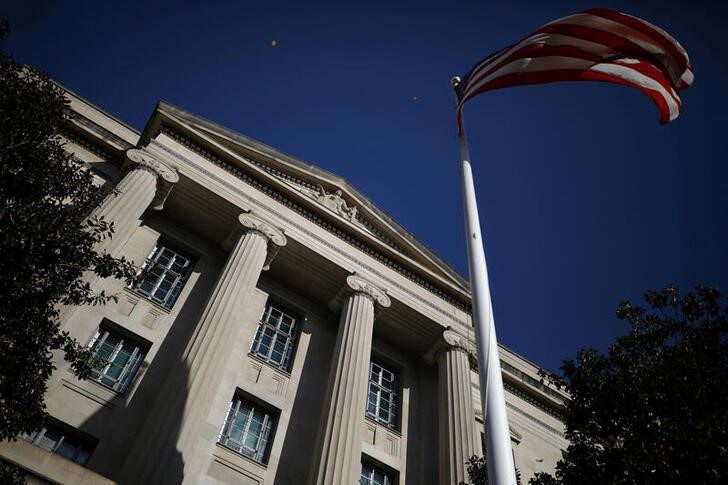HARRISBURG – The United States Attorney’s Office for the Middle District of Pennsylvania announced that on December 8, 2022, James A. Coccagna, age 67, of Chambersburg, Pennsylvania, pleaded guilty before United States Magistrate Judge Martin C. Carlson to a criminal information charging him with one count of conspiracy to commit violations of the Major Fraud Act.
According to United States Attorney Gerard M. Karam, between 2003 and 2014, Coccagna, then Chief of the Engineering and Planning Division in the Directorate of Public Works at Letterkenny Army Depot, in Chambersburg, worked with a number of unnamed coconspirators to defeat the rules and purpose of the U.S. Small Business Administration’s 8(a) Business Development Program. Coccagna admitted to steering federal government contracts to certain participants in the 8(a) Program, knowing that those companies and their existing employees, if any, were not playing any meaningful role in performing contracts awarded to them.
The 8(a) Program requires socially and economically disadvantaged individuals to exercise unconditional control over their own companies. It also requires these companies to commit to performing at least 15% of the cost of any contract with their own employees. When companies meet these criteria, they can enter the 8(a) Program for a period of up to nine years and then bid on contracts reserved for companies in the 8(a) Program. These reserved contracting opportunities are often referred to as “set-aside” contracts.
Coccagna admitted to conspiring with three individuals who worked in the field of construction—known in the information as coconspirator 1, coconspirator 2, and coconspirator 3—to get set-aside contracts at Letterkenny awarded to a series of 8(a) Program participants controlled by the three unnamed individuals. These 8(a) Program participants included a company known as 8(A) company 1, which was affiliated with another unnamed individual known as coconspirator 4 in the information.
Starting around 2007, Coccagna and coconspirators 1, 2, 3, and 4 began conspiring to obtain 8(a) Program set-aside construction contracts at Letterkenny Army Depot, a facility under the command structure of the U.S. Army Aviation and Missile Command. Coccagna recommended that the Letterkenny contracting office select 8(A) company 1 for a series of contracts because he knew of 8(a) company 1’s affiliation with coconspirator 1, coconspirator 2, and coconspirator 3. Coccagna made similar recommendations for several other 8(a) Program participants, likewise on the basis of their affiliation with coconspirator 1, coconspirator 2, and coconspirator 3.
In order to make it appear falsely that 8(A) company 1 was meeting the 15% self-performance requirement, coconspirators 1, 2, 3, and 4 moved actual laborers who were on site at Letterkenny Army Depot onto the 8(A) company 1 payroll. This same practice was also carried out with the other unnamed 8(a) Program participants dating back to 2003. Coccagna was aware of this practice and, more generally, was aware that coconspirator 4 and her existing employees, if any, were not performing on-site work. Furthermore, coconspirator 4 was rarely, if ever, present at Letterkenny Army Depot following an initial meeting with Coccagna and the other unnamed conspirators in 2007.
For several years starting around 2007, coconspirators 1, 2, and 3 were simultaneously affiliated with both 8(A) company 1 and one of the other 8(a) Program companies. Their representations about which company they were affiliated with depended on which contract a job fell under. From Coccagna’s perspective, however, the day-to-day performance of the work was unaffected by which company’s name coconspirators 1, 2, and 3 were operating under.
Coccagna also admitted that coconspirator 1 solicited, and Coccagna unlawfully provided to coconspirator 1, confidential information in order to help coconspirators 1, 2, 3, and 4 win a $60 million construction contract in 2009.
The total value of the contracts associated with this conspiracy exceeded $100 million. Coccagna understood that there was a financial benefit to the individuals who were, on paper, the heads of the various 8(a) Program participants to which he steered maintenance and construction contracts, such as coconspirator 4.
The case was investigated by the U.S. Department of Defense Office of Inspector General, Department of the Army Criminal Investigation Division, U.S. Department of Veterans Affairs Office of Inspector General, and the U.S. Small Business Administration Office of Inspector General. Assistant U.S. Attorney Ravi Romel Sharma is prosecuting the case.
The maximum penalty under federal law for conspiracy is 5 years of imprisonment, a term of supervised release following imprisonment, and a fine. A sentence following a finding of guilt is imposed by the Judge after consideration of the applicable federal sentencing statutes and the Federal Sentencing Guidelines.
# # #
